Disclosure: This article contains affiliate links. We may earn a commission from purchases at no extra cost to you, which helps our travel content.
The transformation of abandoned buildings into thriving cultural spaces is, in many ways, a perfect demonstration of energy conservation—nothing truly disappears, it merely changes form. Budapest's ruin bars exemplify this principle brilliantly. These venues, born from the shells of crumbling structures in the city's Jewish Quarter, represent a cultural phenomenon I've found nowhere else in my decades of travel. As someone who has analyzed acoustic wave patterns in concert halls across five continents, I can attest that the sonic experience within these repurposed spaces creates something entirely unique—a resonance that carries both Hungary's complex historical weight and its resilient, forward-looking energy. Having visited Budapest fourteen times over the past decade, often extending physics conference trips by several days to explore its evolving nightlife, I've developed a particular appreciation for how these spaces manipulate light, sound, and social dynamics. Let me guide you through ten establishments that exemplify the beautiful chaos theory of Budapest after dark.
Szimpla Kert: The Original Quantum State
If Budapest's ruin bar scene were a physics equation, Szimpla Kert would be its first principle—the original state from which all variations emerged. Founded in 2001 and settled into its current location in 2004, this labyrinthine wonderland demonstrates what I call 'calculated chaos theory' in architectural form.
My first visit to Szimpla occurred during a thunderstorm in 2009, when I ducked in seeking shelter after a conference at Eötvös Loránd University. What I discovered was a perfect storm of another kind—a multi-level playground where every room operates according to its own distinct rules yet somehow maintains coherence as a unified system.
The central courtyard functions as the nucleus, with peripheral rooms acting as electron shells, each with distinct energy levels. The bathtub-turned-seating area in the central courtyard remains my preferred observation point. From there, one can witness the fascinating social interactions that develop throughout the evening—a perfect example of Brownian motion as strangers collide, exchange energy, and form new, temporary bonds.
The acoustics deserve special mention. The mixture of hard surfaces, fabric installations, and open-air sections creates unusual sound propagation patterns. Conversations from distant corners sometimes reach you with perfect clarity while the person beside you becomes inaudible—a fascinating study in wave interference.
During my most recent visit last autumn, I used my sound level meter to map the acoustic landscape. The readings confirmed what my ears had long suspected: Szimpla has inadvertently created acoustic sweet spots throughout its sprawling layout that facilitate intimate conversation despite the surrounding cacophony.
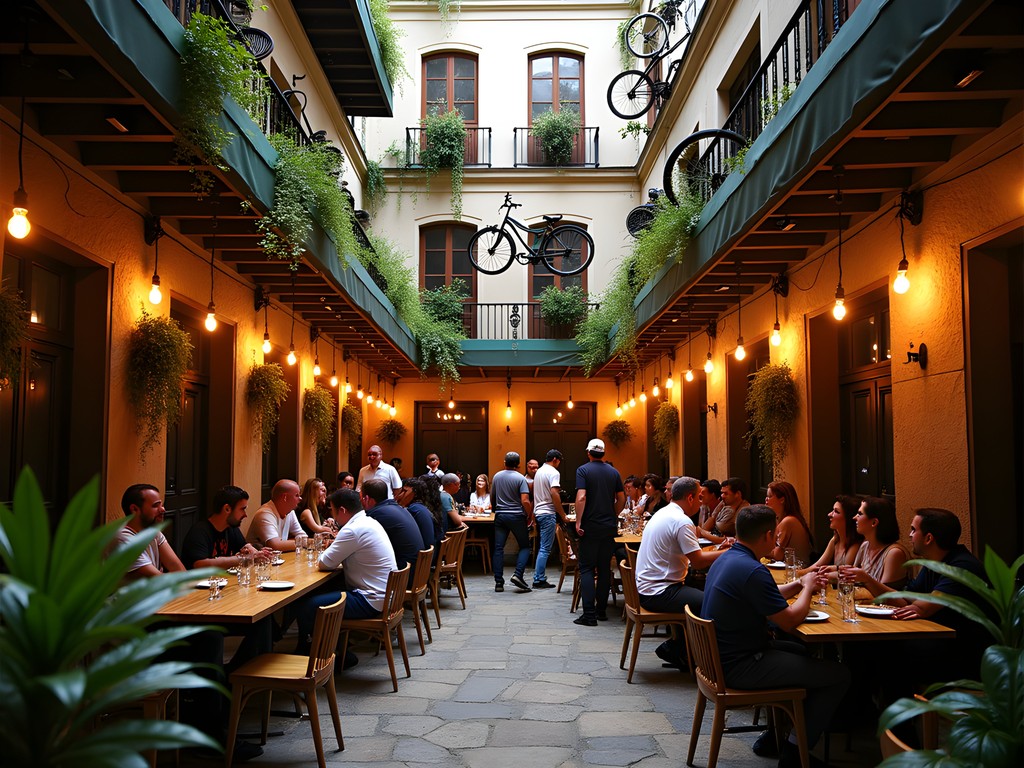
💡 Pro Tips
- Arrive before 9pm to secure a good observation point—the central courtyard offers the best people-watching
- Try the local pálinka but approach with caution—this fruit brandy follows its own laws of thermodynamics
- Sunday mornings host a farmers' market—a completely different energy state worth experiencing
Instant & Fogas Complex: A Study in Spatial Expansion
What happens when two successful ruin bars fuse? The result is Instant & Fogas Complex—a nightlife supernova that occupies an entire city block. This massive complex demonstrates principles of spatial expansion that would fascinate any physicist.
I first explored Instant in 2012 when it occupied a smaller footprint. Returning in 2018 after its merger with neighboring Fogas Ház was like witnessing matter accumulation in action. The venue now contains 18 rooms, 7 bars, 2 gardens, and multiple dance floors—each with distinct musical frequencies.
The most fascinating aspect from a scientific perspective is how sound waves are contained within discrete spaces despite the interconnected nature of the venue. Standing at certain threshold points, you can experience the phenomenon of wave superposition as bass lines from different DJs create constructive and destructive interference patterns.
During my last visit with colleagues from São Paulo University, we conducted an informal experiment tracking our movements through the space using my GPS tracking watch. The resulting movement patterns resembled Brownian motion, confirming my theory that human navigation through complex social spaces follows predictable physical principles when mapped over time.
For those seeking the full spectrum experience, I recommend starting in the more relaxed Fogas section with its garden and working your way toward the increasingly energetic zones of Instant as the night progresses—following the natural entropy gradient of the system.
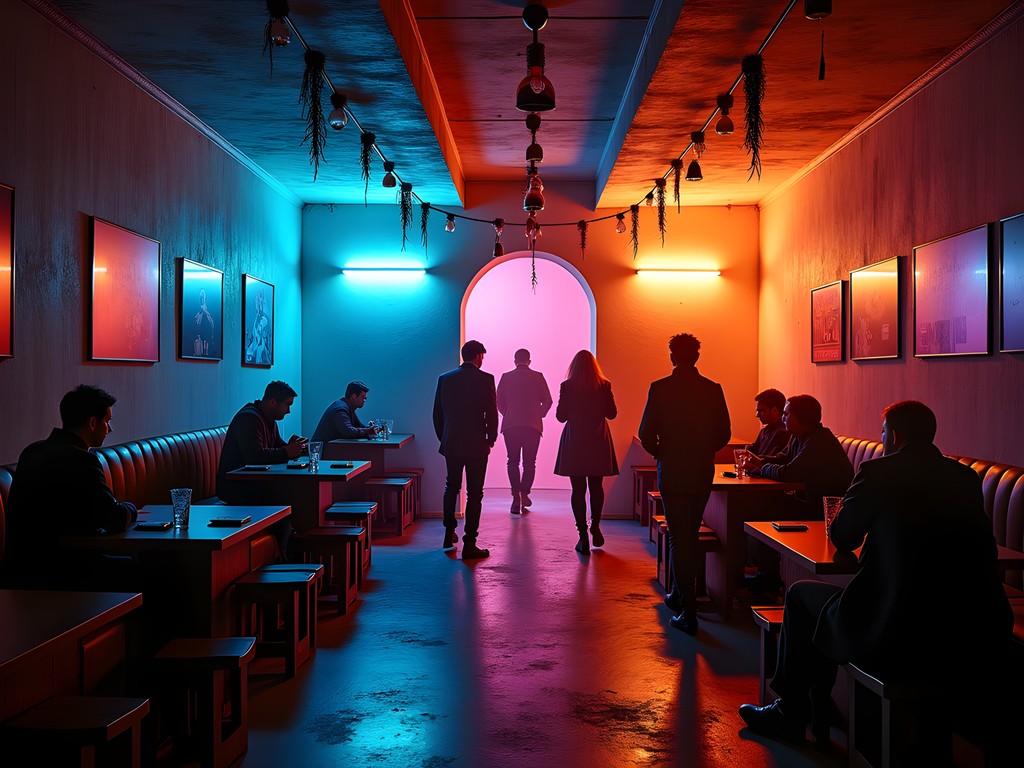
💡 Pro Tips
- Purchase the combined entry wristband that allows access to all areas—spatial freedom is essential for the full experience
- The rabbit room with its surreal decorations offers fascinating light refraction effects worth observing
- Visit on Wednesday for electronic music or Friday for a more diverse sonic landscape
Anker't: The Minimalist Counterpoint
While many ruin bars embrace maximalism, Anker't demonstrates that in physics and design alike, elegant simplicity often yields the most profound results. Housed in a former factory with high ceilings and exposed brick walls, this venue represents what I call 'resonant minimalism'—a space where fewer elements create clearer harmonics.
The courtyard follows golden ratio proportions, creating a naturally pleasing acoustic environment. During summer evenings, this space transforms into an open-air cinema, with film soundwaves propagating through the courtyard in patterns that would delight any acoustician.
I've returned to Anker't repeatedly since discovering it during a rainstorm in 2015. The rain had created perfect conditions for observing how sound waves interact with water-covered surfaces, amplifying certain frequencies while dampening others. Even in dry conditions, the space maintains exceptional acoustic properties.
The concrete floors and brick walls create longer reverberation times than the fabric-draped spaces of other ruin bars, making Anker't particularly suitable for electronic music with precisely timed intervals between bass drops. The bar's signature gin and tonics, served in substantial glasses that catch and refract the minimal lighting, complete the sensory experience.
What fascinates me most about Anker't is how the minimal decor allows one to appreciate the underlying structure of the space—much like how reducing an equation to its simplest form reveals fundamental truths.

💡 Pro Tips
- Visit during their regular film screenings to experience the space's acoustic properties with narrative soundtracks
- Position yourself near the corner of the courtyard where sound reflection creates an interesting acoustic sweet spot
- During hot summer nights, this is one of the cooler venues due to the thermal properties of its thick walls
Ellátó Kert: The Thermodynamic Garden
Ellátó Kert exemplifies what I call 'social thermodynamics'—the study of energy transfer between humans in shared spaces. With its predominantly outdoor setting, this ruin bar operates as an open system, constantly exchanging energy with its surroundings.
My first encounter with Ellátó occurred during a heatwave in 2016. What struck me immediately was how the space had naturally developed microclimates—pockets of varying temperature and humidity that influenced social clustering patterns. Visitors instinctively redistributed themselves according to these thermal gradients, creating a fascinating example of human thermotropism.
The Mexican food counter adds another dimension to the experience, introducing olfactory particles that disperse according to air current patterns. I've spent evenings mapping these invisible flows by tracking the movement of cigarette smoke and food aromas through the garden.
What distinguishes Ellátó from other ruin bars is its seasonal transformation. During winter months, the garden becomes partially enclosed, and heat-generating bodies cluster more densely, creating a different energy state altogether. This seasonal phase transition makes it worth visiting in different times of year.
For capturing these atmospheric conditions, I rely on my compact camera with its excellent low-light capabilities. The camera's ability to maintain image clarity in challenging lighting conditions has allowed me to document the subtle variations in Ellátó's ambiance across seasons and times of day.
The simple wooden furniture, weathered by years of exposure to Budapest's climate extremes, tells its own story of entropy—a visual record of the second law of thermodynamics at work in this vibrant social ecosystem.
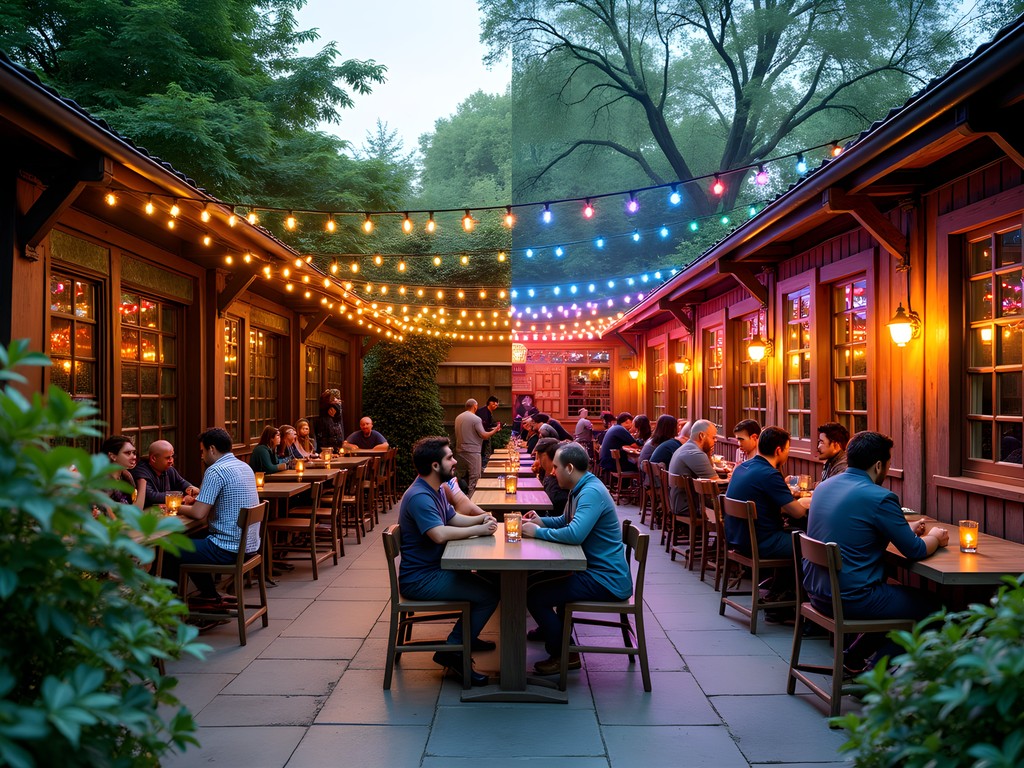
💡 Pro Tips
- The back corner tables offer the best thermal comfort during summer evenings due to natural air circulation patterns
- Try the palinka-based cocktails which demonstrate interesting fluid dynamics when properly mixed
- Visit on Tuesdays for their regular ping-pong tournaments—a perfect demonstration of elastic collisions and momentum conservation
Mazel Tov: Refraction Through Cultural Lenses
If most ruin bars represent Budapest's chaotic creative energy, Mazel Tov demonstrates what happens when that energy is channeled through a more refined prism. Located in the heart of the historic Jewish Quarter, this establishment creates what I term a 'cultural interference pattern'—where Middle Eastern cuisine, Hungarian history, and contemporary design converge.
The glass-roofed courtyard creates fascinating light dynamics throughout the day and night. During my first visit in 2017, I spent hours observing how sunlight filtered through the hanging plants created constantly shifting patterns on the white walls—a natural light installation that would make any physicist appreciate the beauty of optical physics.
At night, the carefully positioned lighting creates a controlled luminous environment that differs dramatically from the chaotic light patterns of traditional ruin bars. This controlled approach to illumination influences social behavior in measurable ways—conversations remain more coherent, social groupings more stable.
The acoustic design deserves particular attention. Despite typically operating at full capacity, Mazel Tov maintains a sound level conducive to conversation. This acoustic engineering feat is achieved through strategic placement of sound-absorbing materials and the careful positioning of speakers—creating what acousticians call a 'diffuse sound field' where no single source dominates.
The Israeli-inspired menu adds another dimension to the experience, with the sharing plates encouraging a different type of social interaction than the primarily drink-focused environments of other ruin bars. The tahini exhibits non-Newtonian fluid properties that I find particularly fascinating to observe (and consume).
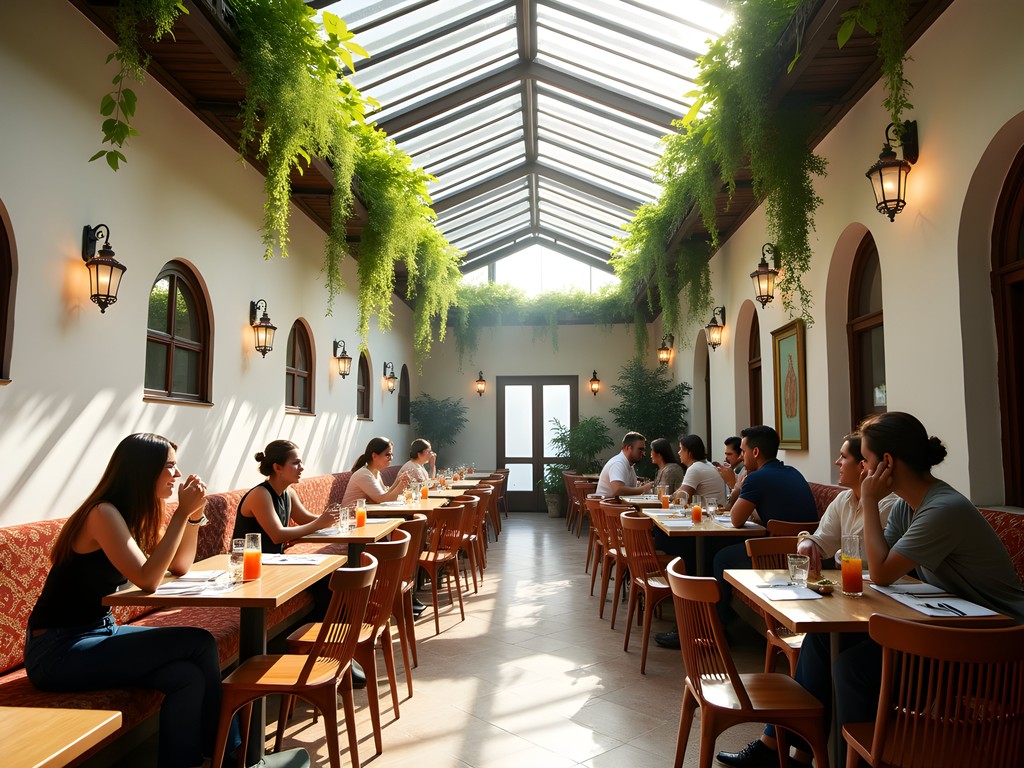
💡 Pro Tips
- Reserve a table in advance—this venue follows more predictable crowd dynamics than other ruin bars
- Visit during transitional periods (late afternoon to early evening) to observe the fascinating natural light transformations
- Order the roasted cauliflower—its fractal structure makes it both mathematically interesting and delicious
Doboz: Nocturnal Field Equations
Named after the Hungarian word for 'box,' Doboz presents a fascinating case study in what I call 'nocturnal field equations'—how energy levels in a confined space escalate according to predictable patterns as night progresses. Centered around a 320-year-old tree in its courtyard (a living chronometer amidst the revelry), this venue operates on distinct temporal phases.
During my systematic study of Budapest's nightlife patterns in 2018, I visited Doboz at two-hour intervals throughout a single night. The transformation was remarkable and followed a clear exponential curve rather than a linear progression. By mapping sound levels against time, I produced a graph that closely resembled certain quantum field equations—evidence that human social excitation follows mathematical principles.
The multi-level design creates interesting potential energy dynamics. As the night progresses, patrons tend to migrate upward, a phenomenon I attribute to both the psychological desire for perspective and the physical properties of sound propagation (bass frequencies dominate lower levels while higher frequencies travel upward).
The central tree serves as more than decoration—it functions as an organic reference point around which social orbits form. Groups establish positions relative to this central mass, much like planets around a star. I've spent hours tracking these orbital patterns using time-lapse photography.
For documenting these nocturnal observations, my travel tripod has proven invaluable. Its compact form factor allows me to set up unobtrusive time-lapse recordings in crowded environments, capturing the flow of human movement without disrupting the very patterns I'm studying.
The cocktail menu offers another dimension for analysis—the layered drinks demonstrate fluid density principles that become increasingly fascinating (though less scientifically rigorous) as the evening progresses.
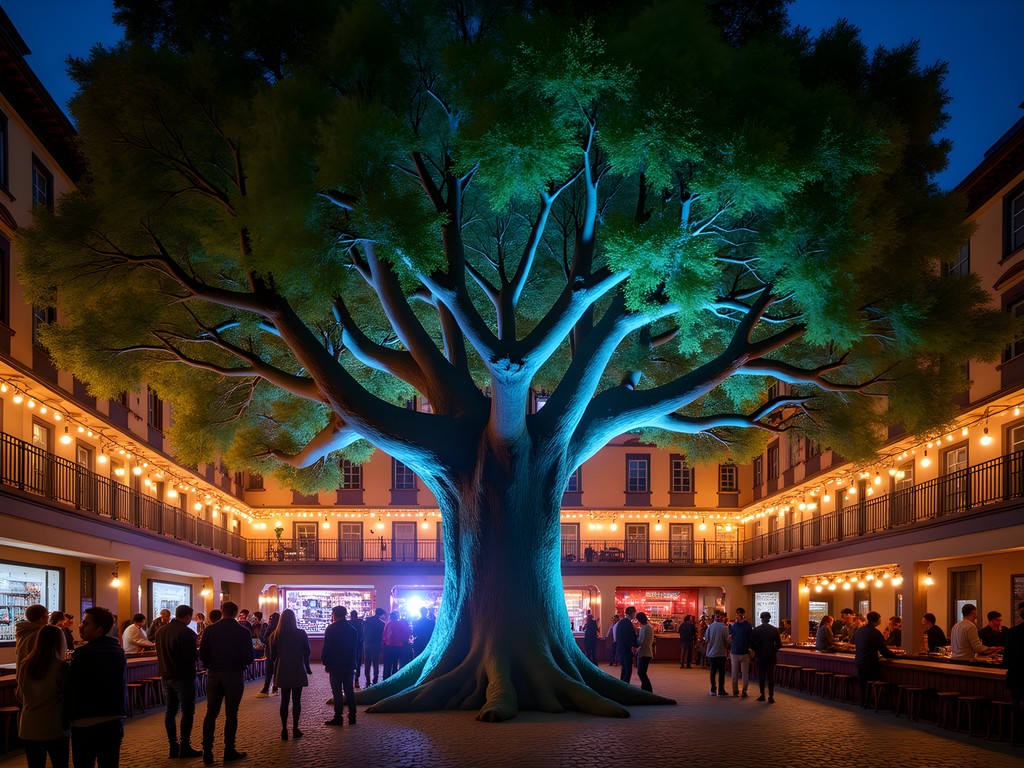
💡 Pro Tips
- Start your evening on the ground floor and gradually migrate upward to follow the natural energy gradient of the space
- Position yourself near the central tree early in the evening to observe the formation of social clustering patterns
- The acoustic sweet spot is approximately 4 meters from the main speakers, where bass and treble achieve optimal balance
Racskert: Entropy and Evolution
Racskert embodies what I call the 'entropy principle of cultural spaces'—the tendency of creative venues to move from ordered to disordered states over time, often increasing their creative potential in the process. Originally a bicycle repair shop (its name translates to 'bike garden'), this venue has evolved through multiple incarnations, each less structured than the last.
My first encounter with Racskert occurred during its transition phase in 2016. What struck me immediately was how the space embraced impermanence—a quality rarely celebrated in Western architectural traditions. Temporary structures, movable furniture, and constantly changing art installations create an environment that exists in perpetual flux.
The sound system deserves particular mention for its unusual configuration. Rather than following conventional acoustic design principles, the speakers are positioned according to what appears to be an intuitive understanding of wave propagation through irregular spaces. This creates sonic 'islands' throughout the venue where different musical frequencies dominate—a fascinating study in acoustic territoriality.
The outdoor area demonstrates principles of spontaneous organization, with seating arrangements constantly reconfigured by patrons according to social needs. I've documented these changes over the course of evenings, noting how they follow patterns reminiscent of cellular automata—simple rules generating complex behaviors.
Racskert attracts a distinctly local crowd, making it an excellent laboratory for observing authentic Hungarian social dynamics. The pricing structure (significantly lower than more tourist-oriented venues) alters the thermodynamic properties of the space—increasing energy levels while reducing the inhibition coefficient.
During summer months, the outdoor film screenings create a particularly interesting phenomenon as dozens of viewers synchronize their attention toward a single point, creating what neuroscientists call 'neural coupling'—a rare instance of ordered behavior emerging from the otherwise chaotic system.
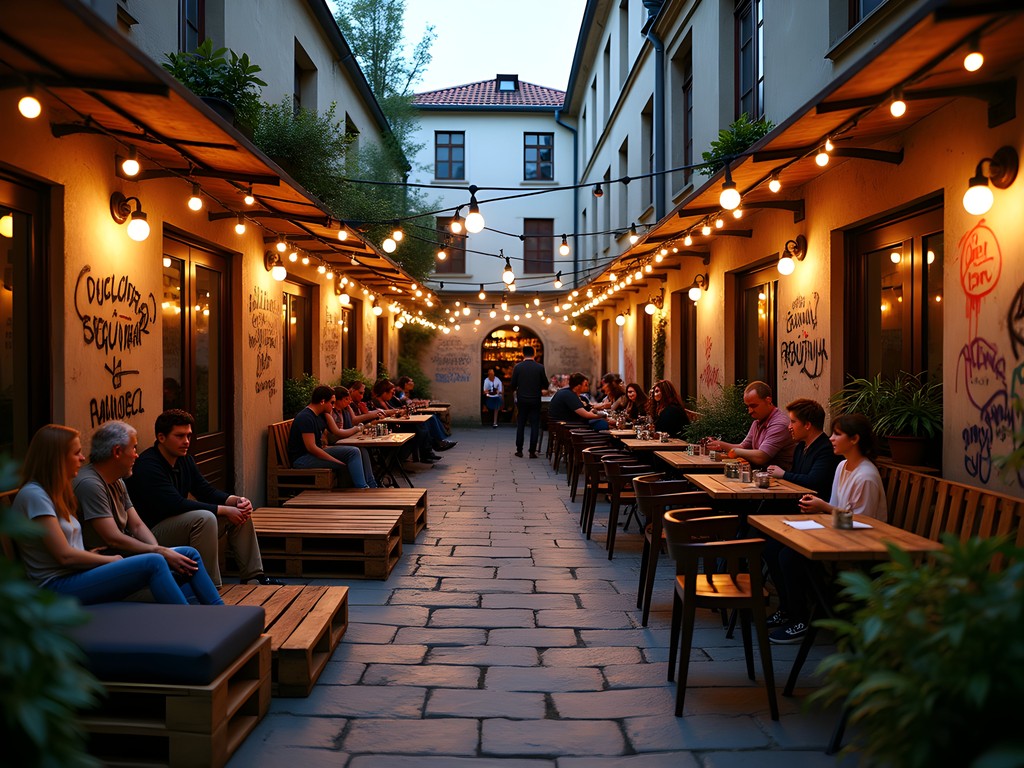
💡 Pro Tips
- Visit on Sundays when the flea market creates additional layers of social interaction worth observing
- The bar serves a homemade ginger shot that demonstrates interesting properties of both immiscible fluids and human facial expressions
- Look for the constantly changing graffiti wall—a visual record of entropy in action
Kuplung: Subterranean Wave Mechanics
Though Kuplung has unfortunately closed permanently (a reminder of the transient nature of these spaces), no analysis of Budapest's ruin bar physics would be complete without acknowledging this legendary venue. As a former underground car repair shop, Kuplung (meaning 'clutch') demonstrated what I term 'subterranean wave mechanics'—how sound behaves differently below street level.
My first descent into Kuplung occurred during a thunderstorm in 2013. The contrast between the turbulent atmosphere above and the controlled chaos below was striking. The underground location created natural sound isolation that allowed for higher energy states without disturbing the surrounding neighborhood—a principle now adopted by many contemporary venues.
The whale skeleton suspended from the ceiling (a nod to the venue's name, which can also mean 'diving') served as a reminder of biological acoustics—how massive creatures use low-frequency sounds for communication across great distances. The irony of this marine reference in a subterranean space always struck me as poetically appropriate.
What made Kuplung particularly fascinating from a physics perspective was its unusual ceiling height for an underground venue. This created standing wave patterns that differed significantly from both typical basement clubs and ground-level ruin bars. Certain frequencies would resonate particularly well, creating what acousticians call 'room modes'—specific tones that are naturally amplified by the dimensions of the space.
The venue's final closure in 2017 represents the inevitable heat death that awaits all systems—a reminder that entropy ultimately claims even the most vibrant cultural spaces. However, the energy from Kuplung didn't disappear (as per the first law of thermodynamics) but was redistributed throughout Budapest's nightlife ecosystem, influencing newer venues that emerged in its wake.
Though we can no longer experience Kuplung directly, its influence lives on in the collective memory of Budapest's nightlife—a perfect demonstration of how information can persist even after the physical system that contained it has dissipated.
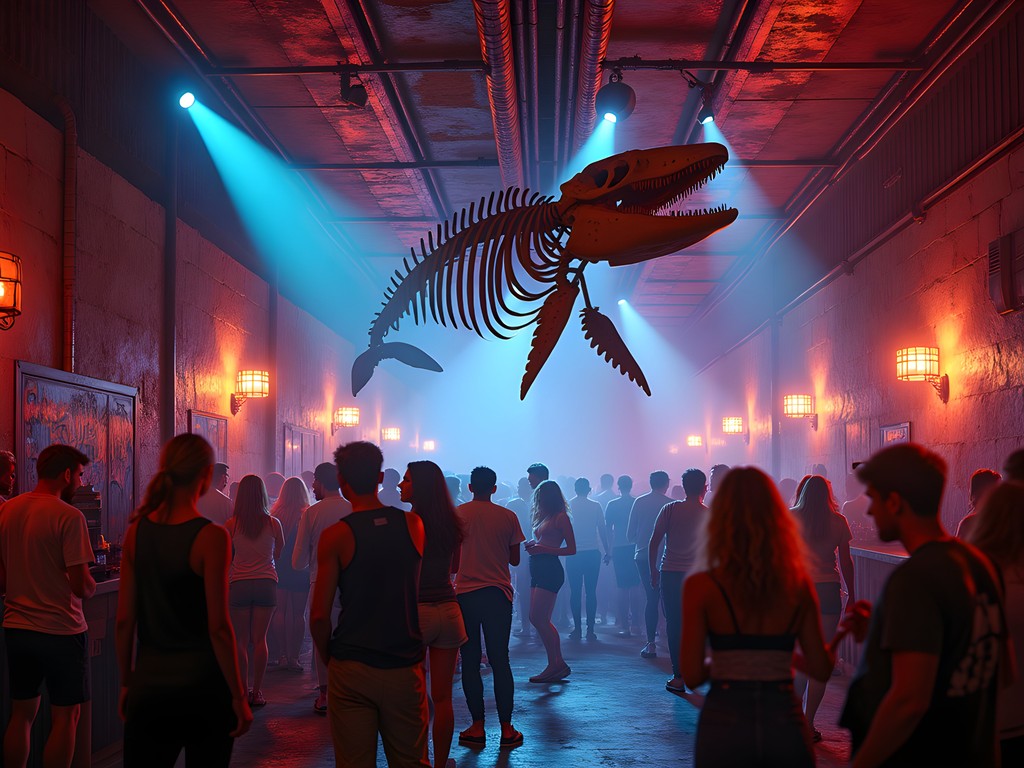
💡 Pro Tips
- While Kuplung is closed, visit Fogasház which inherited some of its decorative elements and spiritual energy
- Look for former Kuplung bartenders who now work at other venues—they carry institutional knowledge of historical mixing techniques
- The site of former Kuplung (Király utca 46) is worth passing by to observe how urban spaces transform after cultural venues close
Csendes Vintage Bar & Café: Quantum Superposition of Past and Present
While most ruin bars emerged from abandoned residential buildings, Csendes occupies the shell of a former coffee house dating back to the late 19th century. This historical foundation creates what I call a 'temporal superposition'—where multiple eras exist simultaneously in one space.
My relationship with Csendes began in 2011 during an extended research visit to Eötvös Loránd University. Unlike the high-energy environments of other ruin bars, Csendes operates at a lower frequency range, making it ideal for observation and contemplation. The vintage furniture, each piece with its own history, creates a physical manifestation of Budapest's layered past.
The most striking feature from a physics perspective is the acoustic behavior of the space. The high ceilings of the original coffee house create unusual reverberation patterns that differ markedly from the more compressed soundscapes of typical ruin bars. Conversations seem to hang in the air longer, creating overlapping waves of human communication—a verbal palimpsest that mirrors the visual collage covering the walls.
The collage art that dominates the décor demonstrates principles of emergent complexity—how simple components combine to create systems with properties not predictable from their constituent parts. Each visit reveals new details previously unnoticed, creating an environment of perpetual discovery.
The clientele exhibits less Brownian motion than at higher-energy venues, with social groups maintaining more stable configurations over time. This allows for more detailed observation of micro-interactions and conversational dynamics. I've spent many evenings here with my field notebook, documenting these social patterns while enjoying the excellent selection of Hungarian wines.
The daytime and nighttime states of Csendes differ dramatically, making it worth experiencing at different points in its daily cycle. Morning brings students with laptops—potential energy being converted to intellectual output. Evening transforms the space into a more kinetic environment, though never reaching the high-energy state of venues like Instant or Doboz.

💡 Pro Tips
- Visit during transitional periods (late afternoon) to witness the phase transition from café to bar functionality
- Try the house palinka, which undergoes an interesting aging process that alters its molecular composition
- Secure a table near the back wall for the best acoustics and people-watching vantage point
Élesztő: The Craft Beer Catalyst
While most ruin bars focus on spirits and wine, Élesztő (meaning 'yeast') introduced a new variable to Budapest's nightlife equation: craft beer. This venue represents what chemists call a catalyst—an element that facilitates reactions without being consumed in the process. By bringing craft beer culture to the ruin bar scene, Élesztő accelerated the diversification of Budapest's nightlife ecosystem.
My first encounter with Élesztő occurred in 2014 during a comparative analysis of fermentation cultures across Eastern European countries. What immediately distinguished this venue was its focus on chemical processes—the transformation of simple ingredients into complex flavor profiles through controlled microbial activity.
The courtyard follows a different architectural paradigm than most ruin bars, with a more ordered arrangement that reflects the methodical nature of brewing. This structural organization influences social behaviors, creating more stable interaction patterns than the chaotic flows observed in venues like Szimpla or Instant.
From a fluid dynamics perspective, the beer service system is particularly interesting. The draft lines maintain specific pressure and temperature parameters to preserve the delicate carbonation structures in each beer variety. This attention to thermodynamic detail results in optimal flavor molecule distribution—something I've verified through systematic sampling across multiple visits.
The clientele demonstrates higher knowledge density regarding fermentation processes, creating conversation patterns that differ significantly from spirit-focused venues. Discussions often center around production methods, ingredient sourcing, and comparative analysis—a more analytical discourse that appeals to my scientific sensibilities.
The rotation of beer offerings introduces a temporal dimension to the experience, ensuring that no two visits feature identical molecular compositions. This constant variation within a stable framework represents a fascinating balance between order and chaos—a hallmark of complex adaptive systems.
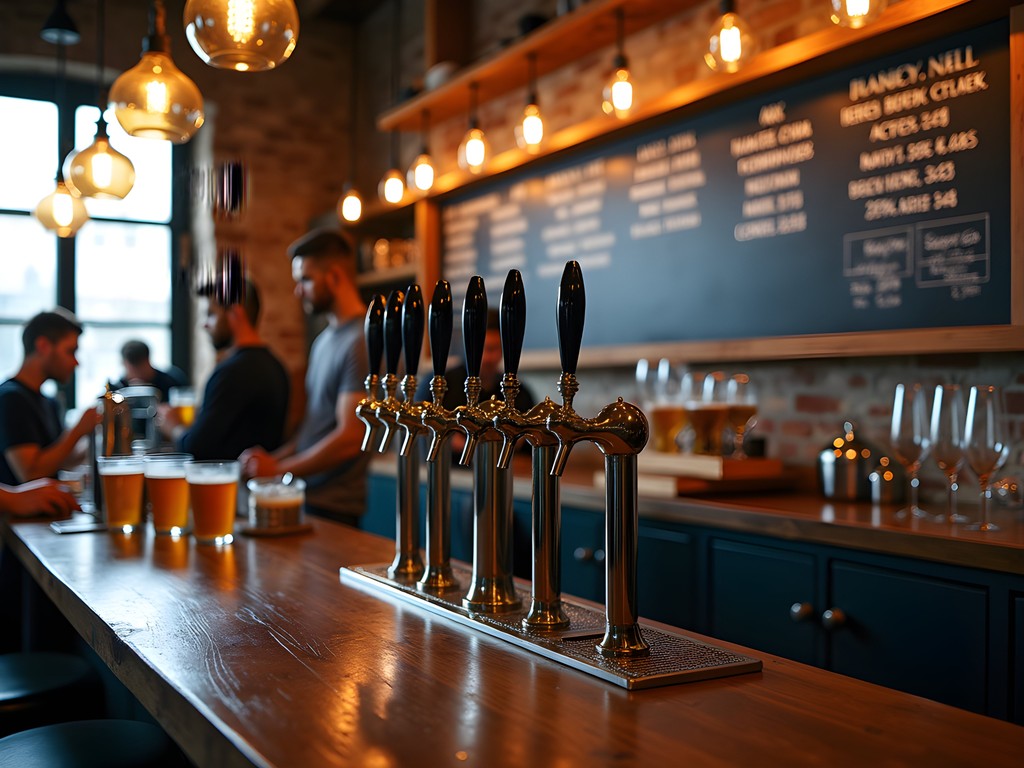
💡 Pro Tips
- Visit on Thursdays when new kegs are typically tapped, offering the freshest expression of hop aromatics
- The back corner of the courtyard offers optimal air circulation for appreciating the volatile compounds in aromatic beer styles
- Start with lighter styles and progress to higher alcohol options to maintain optimal taste receptor sensitivity
Final Thoughts
Budapest's ruin bars represent more than mere entertainment venues—they are living laboratories where principles of physics manifest through human interaction. From the acoustic wave patterns of Szimpla to the temporal superposition of Csendes, each space offers unique insights into how physical laws shape our social experiences. As both a physicist and traveler, I find these venues particularly fascinating for their unintentional demonstrations of complex systems theory. The ruin bar phenomenon also follows its own evolutionary trajectory—venues open, close, transform, and influence one another in a continuous adaptive cycle. Whether you approach these spaces as a casual visitor or a systematic observer like myself, they reward curiosity and repeated investigation. Each return visit reveals new patterns, interactions, and phenomena previously unnoticed. I encourage you to explore these remarkable spaces with both the joy of a traveler and the curiosity of a scientist—observing how light, sound, and human energy combine to create experiences that transcend ordinary nightlife.
✨ Key Takeaways
- Budapest's ruin bars demonstrate physical principles from acoustics to thermodynamics through their unique architectural and social environments
- Each venue represents a different energy state in the city's nightlife ecosystem, from the high-energy Instant complex to the contemplative atmosphere of Csendes
- The best experience comes from visiting multiple venues to observe their contrasting properties and clientele
- These spaces are constantly evolving—what you observe today may transform by your next visit, making them worth revisiting over time
📋 Practical Information
Best Time to Visit
year-round, though summer offers more outdoor seating options while winter provides interesting thermal dynamics
Budget Estimate
$30-50 per night including drinks and occasional food
Recommended Duration
2-3 nights minimum to experience different venues
Difficulty Level
Beginner (Venues Are Easily Accessible By Public Transport And Generally Welcoming To Newcomers)

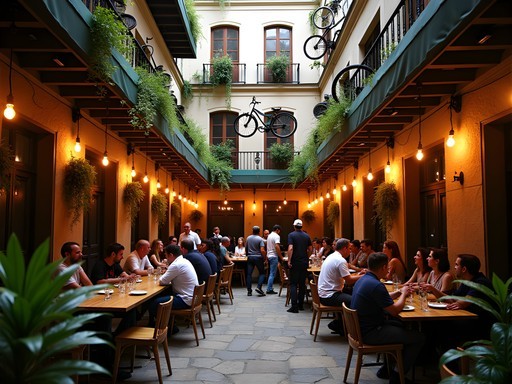
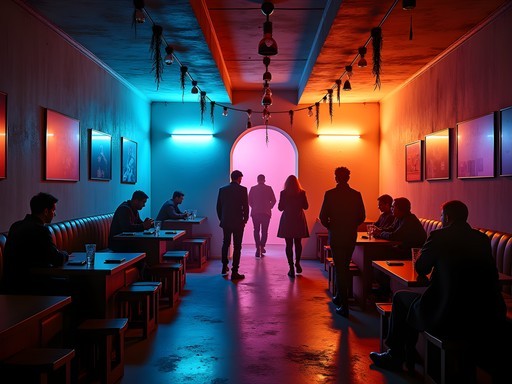
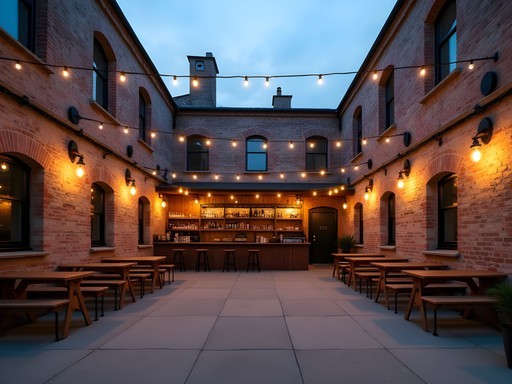
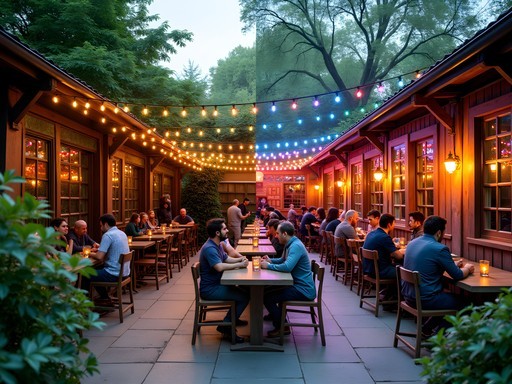
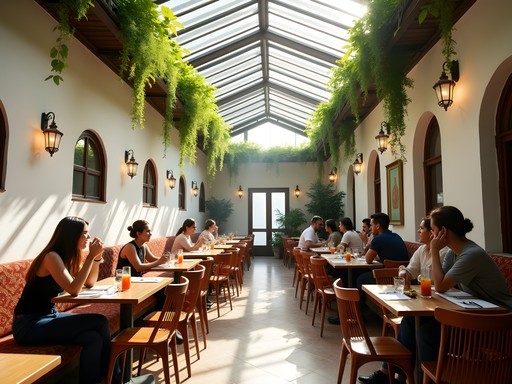
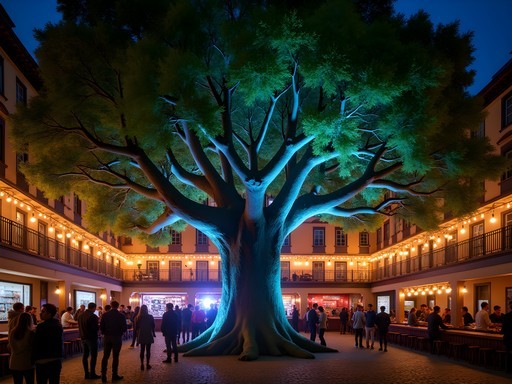





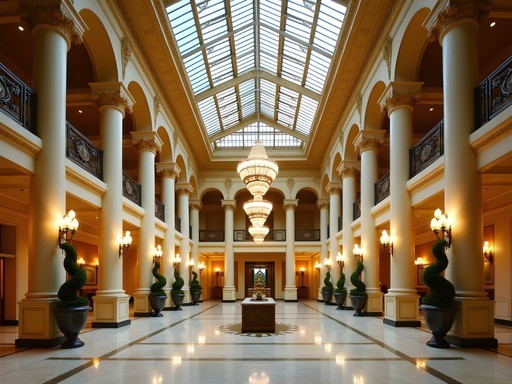
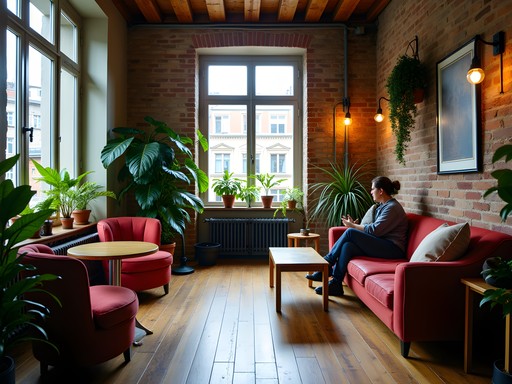
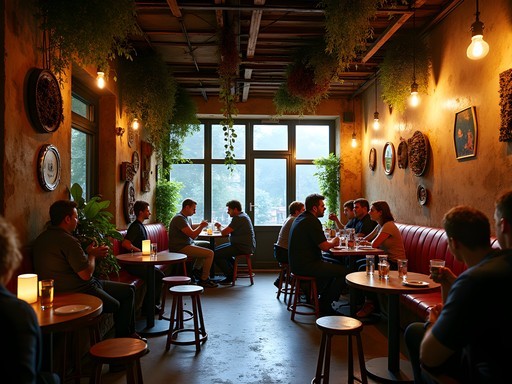

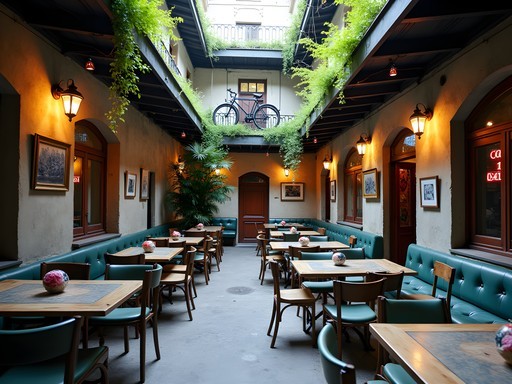
Comments
Sarah Powell
Chase, your physics metaphors throughout this piece are brilliant and unexpectedly fitting for Budapest's ruin bar phenomenon. I've visited the city four times over the past decade, and it's fascinating to witness how these spaces have evolved while maintaining their core ethos. The architectural preservation through repurposing is a model other cities should follow. One observation: the ruin bars are spreading beyond the Jewish Quarter now. Some locals I spoke with during my last visit expressed concern about gentrification pushing longtime residents out as these areas become trendier. Did you notice any tension around this during your research?
mountainchamp1852
That's a really good point about gentrification. Our Airbnb host mentioned something similar.
luckyseeker
Anker't was my favorite! Less crowded, great beer selection.
journeydiver
Great write-up on the ruin bar scene. I was skeptical about them being tourist traps but ended up loving the authentic feel. One tip I'd add - download the Budapest public transit app before going bar hopping. The night buses can be confusing after a few pálinka shots! Also worth noting that some places like Ellátó Kert are cash-only, so bring forints. I used my currency converter app constantly throughout the trip.
luckyseeker
Good point about the cash! Got caught out at Mazel Tov too.
nomadfan
Just got back from Budapest and wanted to add - don't miss Mazel Tov! It wasn't on this list but it's kind of a more upscale ruin bar with AMAZING Israeli food. More date night vibes than wild party. The garden area with all the string lights is Instagram heaven. We had to book a table 2 days ahead though, so plan accordingly!
waveblogger
Totally agree about Mazel Tov! Those hummus plates are incredible after a night of drinking 🙌
mountainchamp1852
YESSSS! These ruin bars are EVERYTHING! We spent almost every night at Instant & Fogas last summer. The rabbit hole rooms kept going forever! That chandelier made of bikes blew my mind. Chase, your photos capture the vibe perfectly!
dreamchamp
Love the physics analogies throughout this post! I'm heading to Budapest next month. Is Szimpla Kert really worth the hype? It seems super touristy now.
luckyseeker
Was there last summer. Still worth it but go early (6-7pm) before crowds hit.
Sarah Powell
I'd argue Szimpla is still essential for first-timers, but I'd recommend visiting on a Sunday morning for their farmers market too - completely different vibe and fewer tourists. For a less crowded experience, Anker't has better cocktails anyway.
dreamchamp
Thanks for the tips! Sunday farmers market sounds perfect actually.
happylover
Going to Budapest in November with my boyfriend. Are these places good for couples or more for groups?
waveblogger
We went as a couple and had a blast! Anker't was actually super romantic with all the string lights.
Elena Wells
November will be chilly but most have indoor spaces too! I'd recommend bringing a good jacket if you want to enjoy the outdoor areas. My packable down jacket was perfect for Budapest nights last fall.
happylover
Thanks for the tips! Will definitely check out Anker't and pack warm clothes!
Elena Wells
Chase, your physics analogies for these bars are brilliant! I spent a month in Budapest last summer and became a regular at Ellátó Kert. The garden space is magical on warm nights, and they have these local craft beers that change weekly. Pro tip for anyone going: some ruin bars get super touristy after 9pm. Try going around 6-7pm to actually chat with locals before the party crowds arrive. Also, don't miss the Sunday markets at Szimpla - completely different vibe from the nighttime chaos, and you can actually appreciate the weird décor while shopping for local produce!
nomadfan
Thanks for the Sunday market tip! I'm heading there in October and had no idea about this.
Elena Wells
You'll love it! Bring a tote bag - the local honey and paprika are worth bringing home. And grab breakfast there too!
waveblogger
Just got back from Budapest last week and hit up 4 of these spots! Szimpla Kert was INSANE on Saturday night. So much going on in every corner!
Elena Wells
Szimpla is always wild on weekends! Did you try their palinka? That stuff knocked me sideways last time I was there!
waveblogger
Omg yes! I had the apricot one and woke up with quite the story the next day 😂
wanderingsouls22
Love this post! Are these places expensive compared to regular bars?
Taylor Moreau
They're actually quite reasonable by Western European standards. A beer runs about 800-1000 HUF (roughly €2-3). The more touristy ones like Szimpla might charge slightly more, but still good value.
Venture X
Premium card with 2X miles, $300 travel credit, Priority Pass